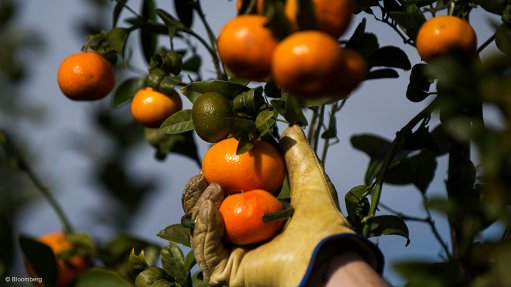Free State researchers part of international team showing that monkeys can get Covid-19
Two scientists from the University of the Free State (UFS), plus a third who is affiliated with the South African institution, are co-authors of a recently published international study of Covid-19. Their paper was published in the internationally peer-reviewed journal Plos One.
The UFS researchers are UFS Genetics Department academic head Professor Paul Grobler and South African Research Chairs Initiative Research Chair in vector-borne and zoonotic diseases and Faculty of Health Sciences Division of Virology researcher Professor Felicity Burt. (Zoonotic diseases are those which can be transferred from animals to humans.) The third UFS-linked researcher is University of Wisconsin-Milwaukee (in the US) Professor Trudy Turner, who is also an affiliated professor in the UFS Department of Genetics.
The study looked at the potential for vervet monkeys to contract SARS-CoV-2 (which causes the Covid-19 disease) from humans and for them to pass it back to humans. More specifically, it looked at genetic variations in the monkeys, which could make them more susceptible to infection by the coronavirus.
“Since wildlife management is my field, I am of course also concerned about the potential animal welfare and conservation issues involved,” observes Grobler. “It should, however, be emphasised that while SARS-CoV-2 infection in vervet monkeys has now been shown to be genetically possible, there is no proof of it actually happening in the wild yet.”
“The research suggests that there is potential for novel SARS-CoV-2 to infect non-human primates, and that surveillance of non-human primates living in close proximity to human populations is not only warranted, but is actually important for defining risk to both humans and animals,” points out Burt. “Novel viruses are continually emerging, and we need to be prepared. A multidisciplinary approach to understanding interactions at the wildlife-human interface will be essential for the prevention of future outbreaks.”
The study was possible because the genome of the vervet monkey had previously been sequenced. Apart from the Universities of the Free State and Wisconsin-Milwaukee, the research team also included scientists from Boston University, Rutgers University, the University of California Los Angeles and the Wake Forest School of Medicine (all in the US); the University of Antwerp in Belgium; the Polish Academy of Sciences and the Russian Federation Ministry of Health.
Comments
Press Office
Announcements
What's On
Subscribe to improve your user experience...
Option 1 (equivalent of R125 a month):
Receive a weekly copy of Creamer Media's Engineering News & Mining Weekly magazine
(print copy for those in South Africa and e-magazine for those outside of South Africa)
Receive daily email newsletters
Access to full search results
Access archive of magazine back copies
Access to Projects in Progress
Access to ONE Research Report of your choice in PDF format
Option 2 (equivalent of R375 a month):
All benefits from Option 1
PLUS
Access to Creamer Media's Research Channel Africa for ALL Research Reports, in PDF format, on various industrial and mining sectors
including Electricity; Water; Energy Transition; Hydrogen; Roads, Rail and Ports; Coal; Gold; Platinum; Battery Metals; etc.
Already a subscriber?
Forgotten your password?
Receive weekly copy of Creamer Media's Engineering News & Mining Weekly magazine (print copy for those in South Africa and e-magazine for those outside of South Africa)
➕
Recieve daily email newsletters
➕
Access to full search results
➕
Access archive of magazine back copies
➕
Access to Projects in Progress
➕
Access to ONE Research Report of your choice in PDF format
RESEARCH CHANNEL AFRICA
R4500 (equivalent of R375 a month)
SUBSCRIBEAll benefits from Option 1
➕
Access to Creamer Media's Research Channel Africa for ALL Research Reports on various industrial and mining sectors, in PDF format, including on:
Electricity
➕
Water
➕
Energy Transition
➕
Hydrogen
➕
Roads, Rail and Ports
➕
Coal
➕
Gold
➕
Platinum
➕
Battery Metals
➕
etc.
Receive all benefits from Option 1 or Option 2 delivered to numerous people at your company
➕
Multiple User names and Passwords for simultaneous log-ins
➕
Intranet integration access to all in your organisation


















